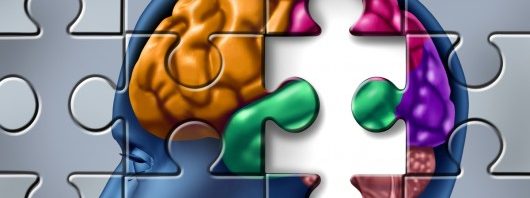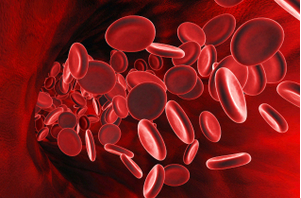Eating disorders are much more prevalent in our society than many people believe. While exact numbers on eating disorders are difficult to get (due to self-reporting and the stigma attached to them) it is believed up to 35% of all people with eating disorders could be male. This is a stark difference from eating disorders being a “feminine” disease. While women may be at a higher risk of developing an eating disorder there are still many factors to be considered. Neurologically estrogen appears to play a massive role in the development of an eating disorder. This could be from a smaller amount of testosterone (a sex hormone that appears to help inoculate against eating disorders) in the womb and higher levels of estradiol (an estrogen) during puberty and later in life. Bulimia nervosa, typically just called bulimia, is an eating disorder where the afflicted binge eats and later on purges (though some means) the excess calories consumed (the “typical” method of purging is inducing vomiting). Due to the purging nature of the disorder it can be incredibly difficult to detect a friend or loved one with the disease.
While the exact role in estrogen in eating disorders (and bulimia specifically) is not fully understood there is a clear correlation between estrogen and eating disorders. Does this mean that eating disorders are beyond our control save through regimented hormone treatments? No. Just like some of the diseases that we have talked about over the past several months the disease is a combination of neurochemistry (something beyond a person’s control) and their thought processes (something within their control). Eating disorders are not something to be taken lightly, and altering the established neuro-connections can be difficult, but time, therapy and maybe (MAYBE) drugs can bring one close to a facsimile of normal. Since an eating disorder like bulimia is a combination of something going wrong with the estrogen cycle and a feeling of guilt or lack of control there are things you can do. Being okay with oneself is crucial! Regardless of how you look you are beautiful.
Societal pressures have been seen to have a correlation to eating disorders not only in women, but in men too. Unfortunately, there’s no easy fix for societal pressures, since they are beyond just one or even a group of peoples’ influence, but understanding that body image is not as important as people claim, is crucial. Ultimately curing eating disorders doesn’t come down to treating it with chemicals that reduce estradiol or increase testosterone in utero, but instead teaching everybody to be comfortable with themselves and to be okay with whatever type of body they happen to have.
Bulimia Nervosa: The Eating Disorder That Hides
Bulimia nervosa is an eating disorder that often can’t be seen in an everyday person. Often people with this eating disorder look normal and decently healthy, but there is an underlying issue that is taking place. Bulimia can be that underlying issue. Bulimia is characterized by a cycle of binging and purging. For example, a person will eat a ton of food, the binging part, and then they will excrete that food from there body through vomiting, the purging part. Unless you see the person committing the purging part, it is hard to know that they have an eating disorder, and this is why bulimia is an issue that often goes undiagnosed. Unless the person with the eating disorder seeks help, this issue is often not discovered. Most often people don’t want to reveal to others that they have a problem because nobody likes to do that, and that is why bulimia is such a scary disorder. In class we had some interesting talks about what to do and how to help someone with bulimia, but it is difficult to help someone when you don’t even realize that they are dealing with this problem. There is much more to learn about bulimia and why it effects people the way it does, but in discussion we proposed a few reasons. First and foremost is the issue of today’s society. If you happen to watch tv or go on your computer at any point in the day, I’m sure you will know what I am talking about when I say that the standards that people are held to today are unrealistic. By this I am saying that the models and photoshopping used in ads needs to stop because it is making people feel that there body is insufficient. There are people who are completely healthy and fit and still feel that there body doesn’t meet societies standards because of the media they are surrounded with. This can often cause people to develop eating disorders, and one of the eating disorders that can be developed is bulimia. People will still eat but they will just throw it up so they can loose weight and try to look skinnier and more fit. This is all stemming from the image that the media is putting out there is commercials and other ads. So that is definitely one issue that needs to be fixed.
Another issue that could be addressed is that of education on these eating disorders. I think that often people with these eating disorders don’t know what to do or where to go to seek help when they are facing these problems. Just think what you would do if you knew someone who had bulimia and you wanted to help them. Where would you go, who would you turn to. It is kind of a scary thought. People often aren’t educated about what to do if they are dealing with this disorder. It seems simple to just say stop binging and purging but that is only treating the physical aspect of the disorder and ignoring the mental part. I see bulimia as almost an addiction. People start this cycle and see that they are loosing weight and that it makes them feel better for whatever stresses they are facing in their life and they become addicted to it. The brain develops in addiction where you feel that you need to binge and purge and that becomes your norm. So no longer are you able to treat the physical of the disorder but you are dealing with the mental part and that is a whole new ball game. We simply don’t know enough about the disorder to know how to treat the mental part of it, and it will be unique for each person. That is why this disorder is so scary and why it is hard to know who to turn to when seeking help for this disorder. If we can cut it off at the bud by getting rid of unrealistic images of people in the media and educating people more about the disorder so they can detect it early before it becomes addictive, then maybe one day it won’t exist at all. Until that time we have a long way to go.
Alzheimer's Disease: Putting Together the Puzzle

For the past year, visiting my grandfather has been a drastically different experience than what it was when I was younger. Coming up on three years, my grandfather was diagnosed with Alzheimer’s Disease. Upon arriving at the nursing home in Detroit Lakes, I am informed about my grandfather’s daily status. One day he is back in North Korea, the next he is getting ready for work, and another day he is playing cards with me and asking how college is going. As for anyone in this situation, it is very hard seeing someone you love’s behavior change so drastically without his or her conscious effort being a factor. This past week in my Neurochemistry class, we discussed implications of AD and other contributing factors that aid in the behaviors we see in AD.
Alzheimer’s Disease (AD) is the most common form of dementia that introduces problems with memory, thinking and behavior with those who are diagnosed with the disease. Although its prevalence in modern-day research is abundant, the recognition of AD as a disease with multiple pathological contributions within a dynamic whole is imperative to improving treatment. A singular dimension approach to prevention and therapy has been relatively ineffective in the realm of AD. Another pathological contribution to AD, insulin in biological systems, is the leading candidate in showing significant correlations with AD pathology.
During the past decades, higher life expectancies and altered eating habits has led to a correlation to the increase in the prevalence of age-associated diseases such as type 2 diabetes (T2DM). Insulin metabolism is one of the most critical regulators of longevity and aging. Recent studies have shown that insulin resistance in the central nervous system (CNS) is observed in both T2DM and AD. Insulin’s primary role in our bodies is the regulation glucose by promoting glucose uptake in muscle and fat. Historically, insulin is usually solely associated with T2DM, but recent evidence has shown that insulin plays a more extensive role in a range of physiological processes, cellular effects, and in relevance, serving a neuroprotective role in regulation of learning and memory.
The two main hallmarks of AD are two neuropathological processes; excess tau hyperphosphorylation and the over-production of amyloid-β (Aβ). In short, the result of an accumulation of these two compounds disturbs the neurochemistry of individuals with AD. Consequences include neurofibrillary tangles and other abnormal cholinergic factors that forfeit normal brain function due to the excess tau proteins and Aβ sterically disrupting the brain. Insulin resistance has demonstrated a relationship to these two biological explanations for the behaviors we see in AD. Normally, insulin activates a pathway called P13K/AKT which regulates tau phosphorylation and keeps Aβ levels in check. When an individual becomes resistant to insulin, whether it be obesity or aging, impaired P13K/AKT signaling results in the progressive accumulation of the hallmarks of AD. From this one can attribute the involvement of another molecular mechanism contributing to AD progression and insulin resistance.

Becoming a routine, the first question I ask my grandfather’s nurse, “How is his blood sugar doing today?” Prior to the exploration of this topic, the asking of this question was only attributed to the observations my family has made with the state of my grandpa’s behavior. High blood sugar levels—he’s back in North Korea, normal levels—he is the grandpa I have always known. My grandpa was not diagnosed with type 2 diabetes until a year after being diagnosed with AD. We were told that it appearance of both was more than likely due to aging exclusively. Understanding the mechanism behind the link AD and insulin resistance has given me a detailed insight into my grandpa’s diagnosis. Further understanding within AD and its implications is crucial to developing a better solution to alleviating symptoms seen in AD. Hopefully, modern medicine will allow us to address this issue and allow more people to visit their grandparents to play cards and not be told that their age related diseases are each explicitly due to their age.
A Capstone Experience: Neurochemistry with Dr. Mach
I will preface this last blog post by openly stating my love of a liberal arts education, especially the education I received at Concordia College. Not only is this post one of my last assignments for this class, but it is also one of my final obligations as an undergraduate student. I graduate in about a week. Consequently, this post is truly a reflection on my time here at Concordia and in my Capstone Neurochemistry class. It gives me a chance to take a step back and think about my time at college after working almost constantly for 3+ years in order to receive my degree. I am happy to say that I believe that Concordia College has met its five goals for liberal learning both in my comprehensive education as well as in my Capstone Neurochemistry class. The five educational goals for Concordia’s curriculum aim to:
Instill a love for learning
Having a core curriculum that requires classes in different areas has allowed me to expand my thought and to think more critically. Furthermore, different styles of classes have stretched my mental boundaries and have taught me more than I might learn in a single lecture. For example, Neurochemistry has taught me to apply much of what I have learned in lecture courses to real world research and real world problems. It has brought out my love of learning and my love of connecting what I learn to society and the community in which I live. It made me excited about sharing what I learned and about science and research in general.
Develop foundational skills and transferable intellectual capacities
Neurochemistry began with a couple weeks of general background information and review of neuroscience. Furthermore, we were introduced to the concept of a class based almost solely on participation rather than grades. The class structure provided us with the foundation needed to succeed, as well the amount of practice necessary to make us comfortable with sharing our knowledge with the public.
Develop an understanding of disciplinary, interdisciplinary, and intercultural perspectives and their connections
The material covered in Neurochemistry is heavily scientific and specific to research, biology, chemistry, and neuroscience. Nevertheless, we analyzed the material through a critical lens, and one that is versed in other disciplines. During discussion, psychology, sociology, culture, and even philosophical ideas were utilized in order to paint a picture of the extent that the material extends throughout disciplines. These broad ideas also highlighted connections between sections of a paper, between papers themselves, and between the opinions that were debated during discussion.
Cultivate an examined cultural, ethical, physical, and spiritual self-understanding
Not only were diverse ideas discussed, but they were also examined on an individual basis. Active participation in discussion each week required deep self-reflection on what opinions you may hold. It also forces one to examine the ethics behind research methods, therapies used, and the way in which the information is made available to the public. All aspects of the discussion made one realize where they stood, or what they needed to research more. It always seemed that the discussion continued in my head hours after class ended.
Encourages responsible participation in the world
Neurochemistry took classroom learning to another level by assigning blog posts that can be and are read by anyone in the area. The assignment itself encourages responsible engagement in the world. It forces one to write in a clear and understandable way about highly complex topics, and it makes one aware of the impact that can be made in the community simply through sharing knowledge. Neurochemistry showed me that scientific research breakthroughs should be available and understandable to the public. It reminded me of my duty as a scientist to use and share my knowledge wisely with all for the betterment of community.
Overall, my education, and specifically my time in Neurochemistry this semester, has brought me full circle from the time I stepped foot on campus until now, as I am preparing to leave it. I have truly developed a thirst for knowledge, the skills required to obtain it, and the responsibility to use it to better the world in which we all reside. Thank you Concordia College, thank you to all my classmates, and thank you to all my professors including Dr. Mach – thank you for a wonderful capstone experience.
An Unemotional Approach to Parkinson's
If you look at Parkinson’s disease from an unemotional perspective, it is one of the many reasons the world is becoming more and more overpopulated. Simply put, people are having more babies and modern medicine is allowing people to live much longer than they have in the past. Currently a baby is born every 8 seconds, one person dies every 11 seconds, and the world has a net gain of one person every 16 seconds(http://www.census.gov/popclock/).
Natural selection, in terms of evolution, means survival of the fittest. For example in a species of fish, imagine there is a gene that encodes for how fast that fish can swim. The species’ main predator is the shark. The fish with the gene type encoding for the fastest swimming ability will survive and reproduce offspring. The fish that had the gene types encoding for slower swimming ability will likely get eaten and not be able to reproduce and pass on their genes. Over time, the fish species as a whole will be able to swim faster because of natural selection.
Modern medicine is essentially working against natural selection. Humans with diseases that would normally die off in other species, are kept alive and able to reproduce and pass their impaired genes onto their offspring. Modern medicine is also keeping people alive longer than they are meant to be, and we are seeing many side-effects of this currently with overpopulation and increases in prevalence of diseases associated with age, such as Parkinson’s disease. For example, the life expectancy in 1950 was 48 years, it is currently about 68 years of age. That fact that people are living much longer causes more humans to inhabit the earth, which means they are using more resources, and causing many environmental and social problems.
Overpopulation is not just caused by longer life expectancy, but it definitely is a main contributor to the situation. There are 7 billion people on the planet right now. Over 1 billion do not have enough food or drinking water. Due to global warming disrupting our ecosystems, billions of more people are threatened with dislocation. To make matters worse, if the population continues it’s growth at the same rate, we will add a billion people to the planet in 12 years(http://www.howmany.org/big_picture.php). Along with decreasing birth rates, another potential solution to this problem could be to stop increasing life expectancy by treating diseases caused by mostly old age.
Old age causes diseases like Alzheimer’s and Parkinson’s by releasing free radical and reactive oxide species, which basically happens throughout your life and at an even higher rate with old age. It if very difficult, if not impossible to cure Parkinson’s. Because one of its main causes is the release of free radicals which happens throughout a person’s lifetime. Specifically Parkinson’s is also caused in part by the release of MPTP (neurotoxin precursor) into the brain. When MPTP crosses the blood brain barrier, it is metabolized into toxic MPP+. This molecule interferes with the electron transport chain. This action leads to cell death and buildup of free radicals. The cell death occurs specifically in dopaminergic neurons, and when these neurons die it causes a loss of cortical control of complex functions. This loss of control is the common physical effect of Parkinson’s(https://en.wikipedia.org/wiki/MPTP).
In closing, the world and its researchers should spend more time and effort on solving global issues caused by overpopulation instead of contributing to the problem by attempting to fight the process of aging.
What is NO, and is it harmful?
Nitric oxide, NO, is a free radical that consists of one nitrogen and one oxygen bound together via a double bond. It is called a free radical because it has an odd number of electrons. Because of the unpaired electron, NO is highly reactive.

NO, with the electrons shown as dots.
NO is produced by enzymes (iNOS, eNOS and nNOS) from the amino acid L-arginine. One of the major players in the production of NO, are glial cells, which produce NO as a response to inflammatory signals. This is important, as it is a way for your body to appropriately respond to harmful stimuli. At low concentrations, NO has many physiological roles as a cellular signaling molecule, but in higher concentrations is associated with various neurodegenerative diseases, as well as multiple sclerosis and strokes. Glial cells overproduce NO in response to a variety of stimuli, such as environmental toxins, and neuronal damage/death products.
Too much NO has been associated with demyelination (removal of the protective and insulating myelin sheath from the axon of the neuron), permeability of the blood brain barrier, and interference with the transmission of the signal within the neuron. Overproduction of NO can also increase the production of more reactive oxygen species, which can wreak havoc on the cell. Such species include ONOO-, the most toxic of the reactive oxygen species. It has been implicated in cell stress, affecting mitochondrial function and a wide variety of vital proteins that help maintain neuronal health.
Researchers are looking at ways to target the signaling pathways that cause NO overproduction in glial cells as a way to prevent the neuronal cell injury/death that is associated with too much NO. Decreasing the expression of iNOS in glial cells is one way they are looking at reducing NO production. Because NO plays such an important role in the bodies cell signaling, completely inhibiting the production of NO via iNOS could even worsen the disease. Developing ways to selectively and partially inhibit the production of NO will be crucial to the success of treatments involving the overproduction of NO. More research will help to elucidate the role of NO in diseases and possibly open new paths for effective inhibition in the body.
For more detailed information and the source of information for this blog, click here.
The Irrational Fear of Autism
Autism while not a positive thing to have it is also not as bad as some of the things that people avoid in order to not contract autism. There are many various environmental factors that have been linked with autism. There is correlation of autism occurring in the children of mothers who have diabetes, stress, exposure to toxins, or encounter diabetes while pregnant. Largely, the paper we studied this week found that “synaptopathy is the underlying mechanism for autism and focusing on the two central environment factors ‘immune system abnormalities’ and ‘zinc deficiency,’ similarities can be found influencing synaptic function and plasticity.” (Environmental Factors in autism, Grabrucker) Many different factors can lead to these environmental factors, including exposure to toxins, poor nutrition (pica), heavy metal poisoning, copper overload, stomach abnormalities, stress, psychiatric drugs and other factors (Environmental Factors in autism, Grabrucker). When one has a zinc deficiency, this tends to lead to immune dysregulation, then to glutamatergic dysregulation (poor signaling in the brain) which leads to an imbalance of ions in the neurons and can eventually lead to autism, as the brain is not functioning properly.
Now, in recent years, there has been a surge of parents choosing to not vaccinate their children for sometimes the reason of not wanting their child to contract autism, granted this is not always the case, but a scientist posting fraudulent results about vaccines being linked to autism in order to better sell a new vaccine that was not supposed to have this link. Now, even if this link were established, it still makes little sense to me as to why someone would choose to not vaccinate their child over risking a disease that could kill them. Many different factors can lead to autism, and vaccines aren’t even a valid factor, and there is no way to protect one’s child from all of these factors. You see something as simple as a pregnant mother having stress can lead to autism, stress, the most common emotion felt by college students (at least it feels that way) and something that most people feel every day. And thinking about it big picture, autism in all reality is not the worst disease someone could have, as even with it they are largely healthy physically. Autism is mostly a social syndrome, it largely impacts how one interacts with others, which can be debilitating as it is then harder to communicate. In the more severe end of the autism spectrum , there are some health problems (like seizures), but the most common form of autism is Asperger’s, which is where the child is high functioning, and has largely only social and communication problems, which while nothing one would wish on their child, is also better than a child contracting deadly diseases. Thus, the thought that a parent would chose to risk the chance of their child being very ill or dying of risking their child having social and communication issues. I feel sometimes there needs to be a certain aspect of trust that when doctors recommend things like vaccines, as they are only trying to help children stay healthy and alive.
Concussions… a question of toughness?
At a recent family gathering over Thanksgiving, my family was watching the traditional NFL football games when they announced the death of Frank Gifford, a former NFL legend. The sports reporters also announced that the medical examiners found evidence of CTE in Gifford’s brain. Chronic Traumatic Encephalopathy (CTE) is caused by atrophy in the brain. Research has found that over 17% people who receive repetitive concussions develop CTE(http://www.ncbi.nlm.nih.gov/pmc/articles/PMC2945234/). CTE presents symptoms similar to Alzheimer’s disease, with memory disturbances and personality changes.
After my family heard this news, they either didn’t completely believe the news or thought he was probably just an outlier. I tried to explain that even with today’s technology, many people who receive multiple concussions can suffer from CTE. This means players from the era of football before modern-day equipment was invented likely had a much higher prevalence of CTE. However, football fans don’t want to believe these facts because they don’t want the game they love to change.
I played football here at Concordia, I know what it feels like to get a concussion. I also know the kind of pressure a player who receives a concussion gets to return to play because often times coaches, teammates, and even trainers do not understand the severity of the injury. Just because the injury is not physically visible, players are simply expected to shake it off, or run the risk of having their “toughness” questioned.
Recently Ben Roethlisberger, a NFL quarterback, removed himself at the end of a recent game because he believed he might have received a concussion. The media and fans had a mixed reaction to his decision. That is ridiculous! I heard many of my teammates say things like, “I’ve had a concussion before, I could play through it if I was in the NFL.” Even some in the media criticized Roethlisberger for his decision. Essentially, people were saying they value their own entertainment more than the potential brain injury Roethlisberger suffered.
The public is not educated enough on the risks and dangers of concussions, especially multiple concussions. The most dangerous issue with concussions is recovery time. Scientists cannot accurately estimate the recovery time needed for concussions to heal in different patients with differing severity. This can lead to second impact syndrome, which occurs when an athlete returns to play too early and receives another concussion before their brain is “healed” from their previous concussion(http://www.brainandspinalcord.org/traumatic-brain-injury-types/second-impact-syndrome/index.html).
The symptoms of second impact syndrome are potentially deadly partially because of the effect concussions have of the white and gray matter in the brain. A brain is made up of white and gray matter. Gray matter consists mostly of cell bodies, dendrites, and axon terminals of neurons. It is involved in muscle control and sensory perception. White matter is comprised of myelinated axons and glial cells in the brain. These myelinated axons modulate the distribution of action potentials. In other words, they coordinate communication between different areas of the brain(https://en.wikipedia.org/wiki/White_matter).
A concussion can have very harmful effects in the brain because the traumatic force induced from a concussion can disrupt the white matter in the brain. When white matter is physically disrupted, the axons can become demyelinated. Demyelination decreases the axons ability to send signals to other neurons, which in turn slows down the communication between different areas of the brain(https://en.wikipedia.org/wiki/White_matter). When your brain receives another traumatic force while it is attempted to fix its white matter, it can cause irreversible damage.
My advice: teach kids at a young age to properly tackle and hit each other in football. We should use rugby as an example for youth football players. Rugby players are forced tackle without hitting their heads because they do not have protective gear. Rule changes to protect players should continue to be discussed and enforced in upper level football divisions, especially the NFL.
Obesity: How it Happens
Obesity is often a very difficult topic. So many Americans are getting diagnosed with obesity every day. Some people may want to simply say it is their own fault, and they are living an unhealthy life. Others want to make obesity a disease that is simply poor luck at no fault of the individual. The fact is, neither of these two views are completely correct. Obesity is a combination of poor choices (by you or your parents) and physiological changes that can occur in an obese body that make it extremely difficult to lose weight by oneself.
There needs to be something to start the process that leads to obesity. That may be as early in life as childhood, where your parents may teach you bad habits about eating such as large portion sizes, eating until you are beyond full, eating for emotional solace, or choosing foods high in fat, salt, and sugar. The process could start later in life as well, where you may simply begin to overeat your metabolism and you begin to put on weight. Obesity does not just happen on its own. You can, however, have a genetic predisposition toward obesity, making it easier for you to overeat as well as harder to resist cravings for food.
The tricky thing about obesity that makes it such a difficult condition to deal with is what happens in your body as you accumulate fat and intake extra sugars. There are neurons in your hypothalamus that have the job of letting you know when you need to eat more, called orexigenic neurons, and when you need to stop eating so much, called anorexigenic neurons. These neurons receive hormones that are released from your digestive tract when it there is too much or too little food or fat in your body. Ghrelin gets released from your stomach when it is empty, and your orexigenic neurons receive this signal and tell you to eat more. Leptin is released from your adipose tissue and it targets both types of neurons, sending a strong signal to tell you to stop eating because you are creating a lot of fat. Insulin released from your pancreas when you eat a lot of sugar targets your anorexigenic neurons telling you to stop eating so much sugar. Finally, your small intestine releases PYY when it is full of food, inhibiting your orexigenic neurons, telling you to stop eating. 
What happens in obesity, is that you begin to develop resistance to leptin and insulin, and this pathway essentially stops working. As your adipose tissue grows, it sends so much leptin to your hypothalamus via the bloodstream, that your neurons are overwhelmed and begin to develop resistance to the leptin. The same thing can happen with insulin in these neurons. Both of these hormones send signals to tell you to stop eating. When you have resistance to them, you no longer have as strong of signals, and it is harder to stop eating when you should. This compounds the effects of bad habits or not being able to afford healthy food and makes it very difficult to lose weight.
Other changes can occur in obesity as well, but this may be the most significant. The important thing is to realize that living a healthy lifestyle is essential. Excessive weight gain is associated with many health problems such as heart disease and diabetes. The best way to avoid this cycle would be to prevent it from ever starting. However, if you have made poor choices at one time remember there are physiological changes that occur in your body that are making it difficult to overcome obesity. Do not be afraid to ask for help losing weight, because it’s not totally your fault.
Synaptic Pruning, Not The work of Hedge Trimmers
I can honestly say that I have very little pruning experience myself, less a few trees in the back yard. When I see a perfectly trimmed tree, bush, or shrub I often think to myself; that must have been a lot of work to get that plant to look just right. Now imagine how complex it would be to prune the structures in the human brain.
The process of trimming the hedges of the brain is called synaptic pruning, and it takes place in humans mostly between early childhood and the onset of puberty. Pruning is basically the elimination of synapses in the brain during development.
This process is generally associated with learning. It may seem counterintuitive to increase understanding by decreasing the number of connections between neurons but it is believed that this helps the brain to more quickly access information by stream lining the processes of the brain by eliminating synapses that are rarely used and strengthening those that are used frequently. This helps to prevent over stimulation of certain parts of the brain. Imagine how easy it would be to get from where you are to Dallas if there were only two or three routes compared to the seemingly limitless number of routes that are actually available.
What is really interesting is that in individuals suffering from Autism Spectrum Disorders there is significantly less synaptic pruning, this means that in some parts of the brain there are more and perhaps too many synapses. This may lead to some common symptoms of ASD like sensitivity to noise and social situations. It could also play a role in the higher prevalence of epileptic seizures in folks with ASD as there is more electrical signaling going on the brain.
It is always important to remember just how complex the brain is. No simple phenomenon can even come close to giving anything like a meaningful description of an issue like this. It is interesting to look at these little pieces of evidence and understand them as we try to better understand ASD and try to better help people who suffer from it.
It is clear that a hedge trimmer is probably not the most appropriate tool when approaching issues of the brain.









